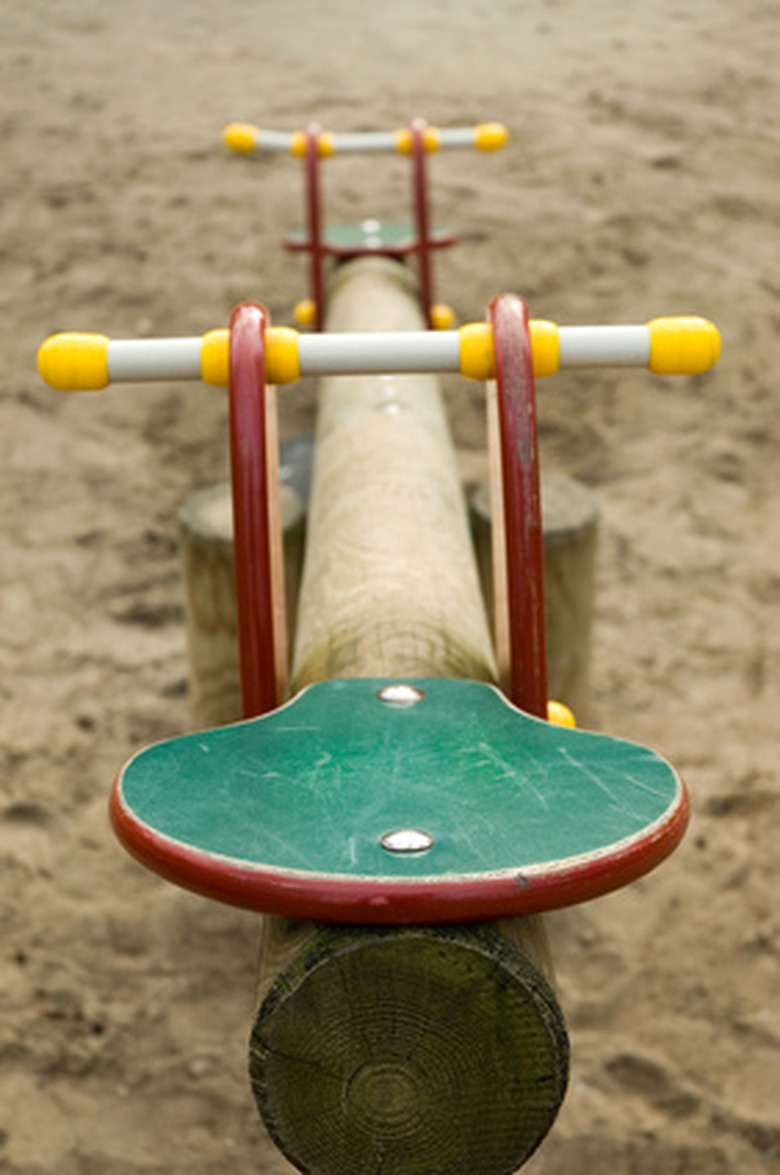What Are The Different Classes Of Levers?
Used for centuries, levers are still considered the easiest ways to lift heavy loads. Of the five types of simple machines, levers use the basic principles of force, pivot and load. Force is the effort put forth. The pivot or fulcrum supports the action. The load is the weight. Levers, used alone and in combination with other levers or simple machines, comprise many common items used everyday such as scissors, pencils and bottle openers.
Class 1 Levers
Class 1 Levers
A Class 1 lever magnifies force or distance, and can change direction. To picture a Class 1 lever, consider the seesaw or teeter totter, basically a board centered on a base. The end of the board where the child sits represents the load; the other end where the adult pushes down constitutes the effort and the base that holds the seesaw becomes the fulcrum. Another example, the mover's dolly, where the pushing down on the handle is the effort, the wheels the fulcrum and the object being moved is the load, demonstrates this simple machine. While items such as wheels, door handles, bike brakes and crowbars use this type of lever once, some devices such as scissors and pliers combine two Class 1 levers.
Class 2 Levers
Class 2 Levers
This class also magnifies force but changes the magnification by adjusting the lever arm. The Class 2 levers have the load in the middle with the force and fulcrum on either end. To demonstrate this lever, think of a wheelbarrow. The farmer's pushing down on the handles represents the effort or force, the wheel the fulcrum and the stuff in the wheelbarrow the load. A bottle opener has the bottle cap or load in the middle with the force applied by the hand at one end and the fulcrum or pivot point at the other end. The wheelbarrow, stapler, bottle opener and door demonstrate a single Class 2 lever, while a nutcracker and nail clippers contain two Class 2 levers.
Class 3 Levers
Class 3 Levers
The Class 3 lever has the effort in the middle with the force and fulcrum on either side and magnifies movement. Sweeping with a broom, (the hand at the top being the fulcrum, the hand down the broom being the effort and the dirt being moved, the load) gives the person doing the sweeping a greater reach in each sweeping motion. Also, the fishing rod with the fisherman at one end as the fulcrum, his arm pulling the rod the effort and the fish being caught the load gives the fisherman more movement to land his prize. Other Class 3 levers include: spoons, pencils, golf clubs, canoe paddles, the human arm, catapult and hoe. Tweezers and tongs each have two Class 3 levers.
Cite This Article
MLA
Yirka, Tonya. "What Are The Different Classes Of Levers?" sciencing.com, https://www.sciencing.com/what-are-the-different-classes-of-levers-12743734/. 20 April 2010.
APA
Yirka, Tonya. (2010, April 20). What Are The Different Classes Of Levers?. sciencing.com. Retrieved from https://www.sciencing.com/what-are-the-different-classes-of-levers-12743734/
Chicago
Yirka, Tonya. What Are The Different Classes Of Levers? last modified March 24, 2022. https://www.sciencing.com/what-are-the-different-classes-of-levers-12743734/
